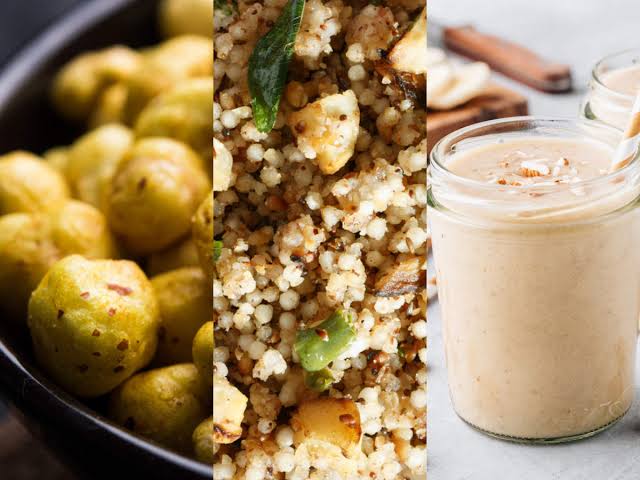Navratri Fasting Tips : 9 Expert-Recommended Foods That You Can Have Guilt-Free
 On the auspicious occasion, here 9 foods and drinks that you can bank on, without worrying about your weight or health.
On the auspicious occasion, here 9 foods and drinks that you can bank on, without worrying about your weight or health.
Avoid eating fried foods in excess during Navratri
Include dried fruits, milk and paneer in your diet
Drink lemonade and buttermilk
Fasting is the essence of Navratri, a festival which is widely celebrated across the country. The idea behind fasting during this festival is also linked to cleansing or detoxing your body with the right food. Eating too much fried or salty foods is thus not advised.
Not only does it defy the whole purpose of fasting, but also affects your health negatively, along with causing weight gain. Celeb nutritionist Rujuta Diwekar recently took to Instagram to talk about a few diet tips that can take you a long way in terms of maintaining your health during and after Navratri.
Diet tips you must follow during Navratri
In the caption of her Insta post, Diwekar talks about how Navratri meals, if followed in the right pattern, can empower women with nutrients that can make them physically stronger and also create a hormonal balance.
Here are the foods you should be eating this Navratri:
1. Dry fruits, milk and paneer
Your daily diet should include dried fruits, nuts, milk and paneer. These foods are all rich sources of protein, can be safely included in weight loss diet, help you build muscles and prevent any wear and tear in the body.
2. Aloo ki kheer (potato pudding)/ shakarkhandi ki chaat (sweet potato salad)/ sabudana khichdi
All of these foods are traditionally eaten as part of Navratri fasting. Tuber veggies like potato and sweet potato provide energy to the body and help in easing digestion. Cook them in the way they have been traditionally cooked in your family. Avoid using too much oil, salt or sugar.
3. Amaranth ki roti
Amaranth or rajgira flour contains a good amount of lysine, which can help in absorption of calcium. This grain is a rich source of fibre, phytosterols and oils that can be beneficial for people with high blood pressure, cholesterol and inflammation.
Amaranth or rajgira flour contains a good amount of lysine, which can help in absorption of calcium
4. Water chestnut (singhara) roti
This is another commonly consumed flour during Navratri. It is rich in Vitamins B, E, potassium, zinc and much more. All of these are coolants that can help in detoxifying the system. You can make puris, chapattis or pakoras from singhare ka atta.
5. Kuttu (buckwheat) ki kadhi
Buckwheat is a delicious grain, commonly consumed during Navratri. Kuttu has fertility improving and detoxifying properties that you can bank on.
6. Mordhan (barnyard millet)
If this grain is available in your area, it can be used for several preparations during the festival. The flour can be used for preparing rotis, puris or pakoras.
7. Banana atta
Raw banana or green banana is a part of multiple Navratri dishes, says Diwekar. The fruit can be stir-fried, boiled, steamed, deep-fried, curried or mashed. The flour of raw banana can further be used for numerous preparations like puris and rotis. Raw banana is a rich source of fibre and is great for those suffering from digestion or bowel issues.
8. Makhanas
Makhanas or fox nuts are like the ideal low-fat Navratri snack. It is also low in sodium and cholesterol. Low sodium content is good for high blood pressure patients. What’s more, makhanas have a low glycemic index, which makes them beneficial for people with diabetes. Ayurveda mentions that makhana has astringent properties that can help in keeping the kidneys healthy.
9. Shikanji (lemonade)/ lassi (buttermilk)
These are hydrating drinks with a rich antioxidant profile. They can help in detoxification and also help in boosting immunity.




